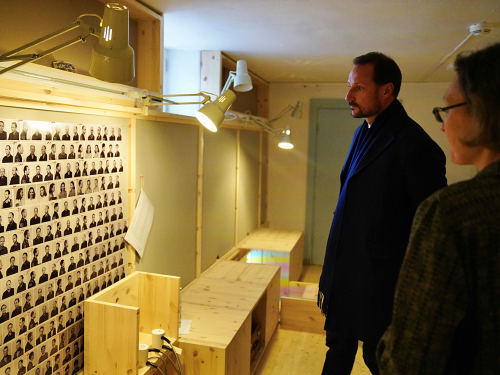Crown Prince Haakon, Regent of Norway, has visited the former Falstad prison camp in Trøndelag. During the visit to Falstad, Crown Prince Haakon met three school students from Trondheim and students from Ole Vig upper secondary school in Stjørdal. The middle school students are all descendants of prisoners who were imprisoned at the Falstad camp.
His Royal Highness said during the visit: “It is great that young people can come here and relive history. That way we are reminded of what freedom costs, because there were many who sacrificed a lot for us to have that freedom. We can not take our freedom for granted.”

Director Christian Wee talked about the history of the Falstad Center and gave His Royal Highness a guided tour. There was also a tour of the former commander’s residence and the two exhibitions “Stories on the run” and “The faces of power”. The commander’s residence was built by prisoners for the German camp management and was completed in 1944. This year, 2020, it is 75 years since the liberation of Norway.
The former Falstad prison camp is now a museum, a memorial and Norway’s national centre for human rights. The German security police established Falstad as a prison camp for political prisoners in the autumn of 1941. More than 4,200 prisoners were imprisoned here during World War II. The Falstad Centre is housed in the buildings of the former prison camp. The centre manages a rich museum collection, and is a learning centre on prisoner history from World War II and on democracy and human rights.
Prisoners from more than 15 nations were imprisoned at Falstad prison camp during the war years. The largest group of prisoners were Norwegians who were suspected or convicted of political opposition. Falstad prison camp was also used as a transit camp for Jews in the autumn of 1942. The spring of 1942 to the autumn of 1943 is considered the most brutal period in the history of the prison camp, in this period more than 200 prisoners were executed. After the German occupation in May 1944, Falstad was turned overnight into a detention camp and later a forced labour camp for convicted Nazis.

